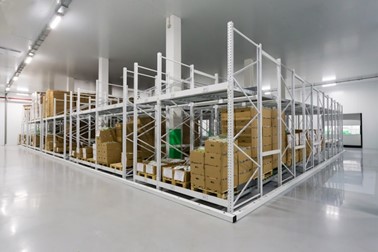Warehousing, once seen as a simple storage solution, has evolved into a complex ecosystem driven by technological advancements, changing consumer demands, and global market dynamics. As we move further into the digital age, the future of warehousing is being shaped by innovative trends that promise to revolutionize operations, efficiency, and customer satisfaction. In this article, John C. DiTonno explores the key trends and innovations driving the future of warehousing and how businesses can adapt to stay ahead in this dynamic industry.
Automation and Robotics
One of the most significant trends shaping the future of warehousing is the widespread adoption of automation and robotics. From automated guided vehicles (AGVs) to robotic picking systems, warehouses are increasingly relying on technology to streamline operations and increase efficiency. These advanced systems can handle repetitive tasks, such as sorting, picking, and packing, with greater speed and accuracy than human workers, leading to significant cost savings and productivity gains.
Artificial Intelligence and Machine Learning
AI and machine learning algorithms are revolutionizing warehouse management by enabling predictive analytics, demand forecasting, and inventory optimization. These technologies can analyze vast amounts of data in real-time, allowing warehouses to anticipate customer demands, optimize inventory levels, and minimize stockouts. By harnessing the power of AI, warehouses can make smarter decisions, reduce waste, and improve overall operational efficiency.
Internet of Things (IoT) and Sensor Technology
The IoT and sensor technology are transforming warehouses into smart, interconnected spaces where every aspect of the operation is monitored and optimized in real-time. IoT-enabled devices, such as smart sensors and RFID tags, can track inventory levels, monitor environmental conditions, and optimize equipment utilization. This data-driven approach allows warehouses to operate more efficiently, reduce downtime, and enhance overall productivity.

Sustainable Warehousing Practices
With increasing awareness of environmental sustainability, warehouses are embracing eco-friendly practices to minimize their carbon footprint and reduce waste. From energy-efficient lighting systems to green building materials, sustainable warehouses are incorporating environmentally friendly features to reduce energy consumption and promote resource conservation. By adopting sustainable practices, warehouses can not only reduce their environmental impact but also improve brand reputation and attract eco-conscious customers.
Cloud-Based Warehouse Management Systems (WMS)
Cloud-based WMS solutions are becoming increasingly popular among warehouses due to their flexibility, scalability, and accessibility. These systems allow warehouses to manage inventory, track shipments, and streamline operations from anywhere with an internet connection. Cloud-based WMS solutions also offer seamless integration with other business systems, such as ERP software, enabling warehouses to achieve greater efficiency and visibility across the supply chain.
Conclusion
As we look to the future of warehousing, it is clear that the industry is undergoing a transformation driven by technological innovation, changing consumer expectations, and the need for greater efficiency and sustainability. By embracing trends such as automation, AI, IoT, and sustainability practices, warehouses can adapt to meet the challenges of tomorrow and position themselves for long-term success in an increasingly competitive marketplace.
